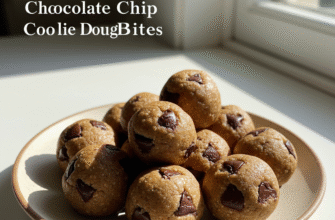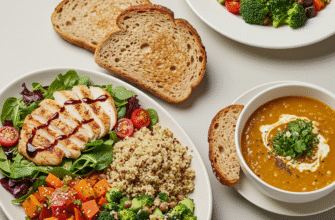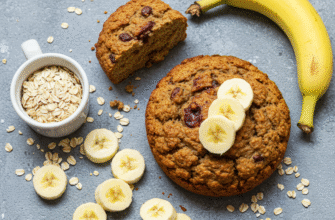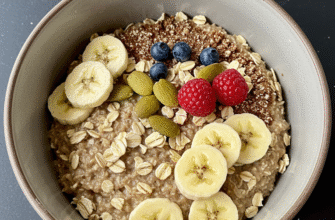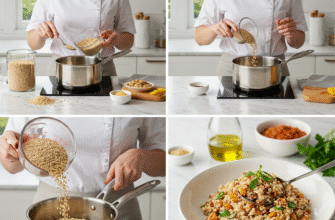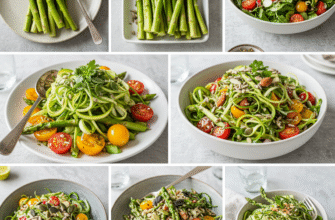So, you’re curious about stepping up your baking game while adding a little wholesome goodness? Let’s talk about whole wheat pastry flour. It’s often seen as a bit of a niche product, sitting quietly on the shelf next to its more common cousins – all-purpose and regular whole wheat flour. But ignore it at your peril! This unassuming flour might just be the secret ingredient you need for tender whole grain baked goods without the sometimes heavy, dense texture associated with standard whole wheat.
Understanding Whole Wheat Pastry Flour
What exactly sets this flour apart? It all comes down to the type of wheat and how it’s milled. Unlike regular whole wheat flour, which is typically milled from hard red wheat (higher in protein, great for sturdy breads), whole wheat pastry flour comes from soft white wheat. Soft wheat varieties naturally have less protein and gluten-forming potential.
Like its regular whole wheat sibling, whole wheat pastry flour contains the entire wheat kernel: the bran (fiber), the germ (nutrients and oils), and the endosperm (starch and protein). This is where it differs significantly from all-purpose or cake flour, which primarily consist of just the endosperm. You get the nutritional boost of the whole grain – more fiber, vitamins, and minerals – packaged in a flour designed for lighter results.
Think of it as occupying a sweet spot: it offers more nutrition than refined flours but yields a much more delicate crumb and tender texture than you’d get using 100% standard whole wheat flour in pastries, cookies, or muffins. The lower protein content means less gluten development, which is exactly what you want for chemically leavened goods where tenderness is key.
Why Make the Switch? The Delicious Benefits
The main draw is achieving a healthier bake without completely sacrificing texture. If you’ve ever made muffins with regular whole wheat flour and found them a tad heavy or dense, switching to whole wheat pastry flour can make a world of difference. You still get that subtle nutty, wholesome flavor and the benefits of whole grains, but the end result is noticeably lighter and more tender.
It’s fantastic for things like:
- Muffins and Scones
- Quick Breads (think banana, zucchini, pumpkin)
- Cookies (especially drop cookies or bar cookies)
- Pancakes and Waffles
- Biscuits
- Pie Crusts and Tart Shells
Essentially, it shines in recipes where you traditionally use all-purpose or regular pastry flour and desire a tender outcome, but you also want to incorporate the goodness of whole grains. It adds a lovely, subtle depth of flavor that complements sweet and savory baked goods alike.
Navigating the Substitution Game
Swapping whole wheat pastry flour into your favorite recipes is usually straightforward, but there are a few pointers to keep in mind. You can often substitute it one-for-one for all-purpose flour in recipes for muffins, cookies, quick breads, and pancakes. However, because it contains the bran and germ, it tends to absorb a little more liquid than all-purpose flour.
If you’re converting a recipe, start with a direct swap. Look at your batter or dough consistency. Does it seem significantly thicker or drier than usual? If so, add a touch more liquid (milk, water, oil – whatever the recipe uses) a teaspoon or tablespoon at a time, until it looks right. It’s better to start slightly dry and add more liquid than to end up with a soupy batter.
If you’re substituting it for regular whole wheat flour in a recipe designed for tenderness (like muffins), you can typically do a direct swap and might even find you need slightly *less* liquid, or simply enjoy the lighter result. If you’re new to whole grain baking or unsure about the flavor impact, try substituting just half the all-purpose flour called for with whole wheat pastry flour first. This lets you ease into the taste and texture difference.
Handle with Care: Whole wheat flours, including pastry flour, contain the oil-rich germ. This makes them more prone to spoiling or going rancid than refined flours. Always store your whole wheat pastry flour in an airtight container in a cool, dark place. For extended freshness, keep it in the refrigerator or freezer.
Tips for Baking Success
Beyond simple substitution, a few techniques can help you get the best results when baking with whole wheat pastry flour.
Don’t Overmix!
This rule is crucial for almost all tender baked goods, but especially important here. Even though whole wheat pastry flour has lower protein than standard whole wheat or bread flour, it still contains gluten. Overmixing develops that gluten, leading to toughness. This is particularly true for muffins, scones, pancakes, and quick breads. Mix wet and dry ingredients only until just combined – a few lumps are perfectly fine!
Consider a Rest Period
The bran and germ in whole wheat flours take a little longer to fully hydrate than refined flour. Letting batters like pancakes, waffles, or muffins rest for 10-15 minutes before cooking or baking can make a difference. This allows the flour to absorb the liquid more thoroughly, resulting in a smoother consistency and potentially a more tender final product. It gives the bran a chance to soften up.
Hydration Awareness
As mentioned earlier, whole wheat pastry flour can be thirstier than all-purpose flour. Keep an eye on the consistency. Muffin batter should be thick but scoopable, not stiff. Cookie dough should hold its shape but not be crumbly and dry. Pancake batter should be pourable but not watery. Don’t be afraid to make small adjustments to the liquid content if needed.
Storage Savvy
Seriously, pay attention to storage. That nutty flavor we love comes partly from the oils in the wheat germ, but those oils can go rancid over time, especially when exposed to air, light, or heat. Rancid flour smells slightly off – maybe like old oil or even play-doh – and tastes bitter. Storing it properly (airtight, cool, dark, or cold) preserves its quality and prevents unpleasant surprises in your baking.
Where It Truly Shines (and Where It Might Need Help)
Whole wheat pastry flour is incredibly versatile, but it excels in certain areas.
Muffins, Scones, and Quick Breads: This is arguably its best application. It provides structure but keeps things tender and moist, adding nutritional value without making them heavy bricks. The slightly nutty flavor pairs beautifully with fruits, nuts, and spices common in these bakes.
Cookies: For drop cookies (like chocolate chip or oatmeal) or bar cookies, it adds a lovely chewiness and depth. It might result in slightly less spread than all-purpose flour, giving a puffier cookie, which many people enjoy. For very delicate or crisp cookies, blending it with some all-purpose flour might yield better results.
Pancakes and Waffles: It makes wonderfully tender, fluffy pancakes and waffles with a subtle whole grain taste. The quick cooking time and minimal gluten development needed make it an ideal choice here.
Pie Crusts: Using 100% whole wheat pastry flour creates a very tender, slightly crumbly, flavorful crust. It’s excellent for rustic fruit pies or quiches. If you want a bit more structure or easier handling, try blending it 50/50 with all-purpose flour.
Where might it be less ideal on its own? Primarily in yeast-leavened breads that require significant gluten development for structure and rise, like sandwich loaves or artisan breads. The lower protein content just doesn’t create the strong gluten network needed. While you *can* incorporate some into yeast doughs for flavor and nutrition, you’ll usually want to blend it with bread flour or strong all-purpose flour (at least 50%, often more) to ensure a good rise and structure.
Embrace the Experiment
Baking with whole wheat pastry flour opens up a world of possibilities for creating more nutritious baked goods that still taste amazing. It bridges the gap between the lightness of refined flours and the heartiness of regular whole wheat. Don’t be afraid to experiment. Start by substituting it into recipes you already know and love, pay attention to the batter consistency, and see how you like the results. You might just discover your new favorite way to bake muffins, cookies, and so much more.

